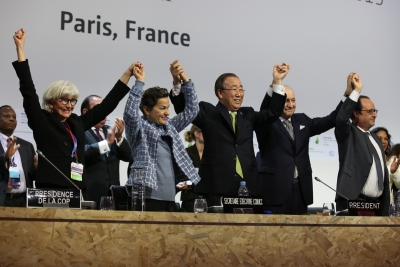
The Paris agreement at the end of the road
After a long marathon of tough negotiations, the Paris agreement was adopted on Saturday 12 December. The French President of COP21, Laurent Fabius, presented the text as historic, ambitious, fair, sustainable, dynamic, balanced and legally binding, raising the audience to a long ovation (you can find the text in English here).
Key elements of the agreement (agreement from page 21):
- Long-term target (Article 2): governments agreed a long-term goal of keeping the increase in global average temperature to well below 2°C above pre-industrial levels and to aim to limit the increase to 1.5°C.
- Mitigation (Article 4): there is an obligation to prepare and communicate NDCs (nationally determined contributions) every five years.
- Carbon markets (Article 6): countries can pursue voluntary cooperation in the implementation of their NDCs (detailed rules for the market mechanism will be established at a later stage).
- Generally, regarding the level of efforts to reduce emissions, although it is said that developed countries should continue to take the lead (Article 4§4), the agreement no longer mentions Annex I countries (as established in the 1992 Framework Convention).
This agreement marks the end of four years of talks that started in Durban to find a replacement to the Kyoto Protocol. After ratification by 55 countries accounting in total for at least an estimated 55 percent of the total global greenhouse gas emissions, it should enter into force after 2020.
(c) Photograph courtesy of IISD/Earth Negotiations Bulletin